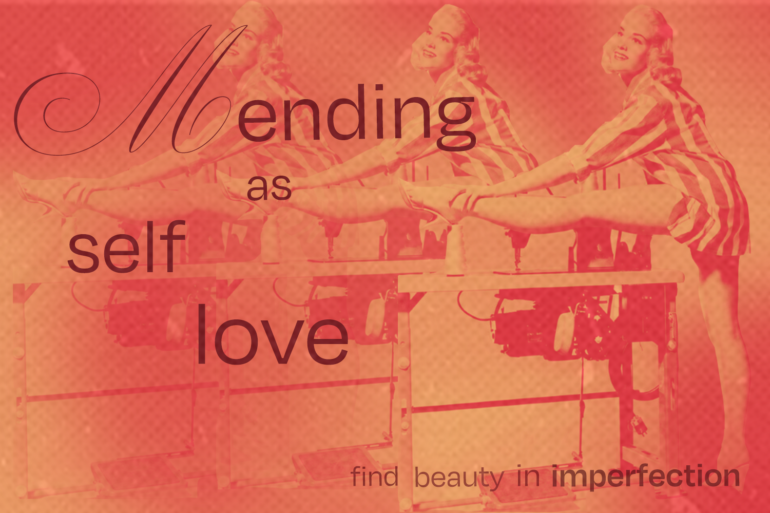The practice of mending is nothing new. Though it’s hard to imagine now, there was a time when all clothing was handmade and therefore costly. Damaged clothing was carefully repaired or repurposed out of necessary frugality and respect for the time and labor that went into textiles. It was only with the industrial revolution that the pace and scale of the textile industry rapidly transformed as new technologies like the sewing machine emerged. The second major shift in the quest for cheap clothing came in the 60s when textile and garment manufacturing moved to the developing world. Today, the trend cycles have reached dizzying new speeds, with powerhouses like Tik Tok and Shein encouraging an approach to personal style that capitalizes on novelty and low prices at the expense of the environment, workers’ rights, and the integrity of our attention spans. In this age of constant consumption and crisis, the slow, low-tech practice of mending offers us refuge as an act of self-love.
Mending forces us to find beauty in imperfection. By embracing damaged garments as opportunities for care and creativity, we can begin to bring this perspective to our own flaws. As we wear our clothes, they begin to tell the story of our lives. With every hole, our clothing reflects the ways that we grow and change over time. Mending allows us to celebrate these changes.
Beyond the symbolic value of repairing our clothes, mending shows promise as an activity that promotes mindfulness. Handicrafts have been recommended as part of occupational therapy since the late 1800s. The repetitive, rhythmic movements associated with sewing encourage you to focus on the task at hand and enter a flow state. The nervous system is only capable of processing a certain amount of information at once, and crafting can help one to temporarily tune out the outside world in favor of the task at hand. The repeated motions of stitching further activate the parasympathetic nervous system, the network of nerves that helps the body to relax. Moreover, knowing that you have the power to learn new skills and care for your belongings builds one’s sense of self-efficacy, a quality that informs how we approach the larger challenges of life.
Like any worthwhile self-care practice, mending has benefits beyond the individual. Of the 53 million tons of textiles produced annually, over 75% are thrown away. Clothing production has doubled in the past 15 years, but the clothes are being worn less and less. Simply extending the useful life of clothing from just one to two years reduces its carbon footprint by 24%. As Orsola de Castro said, “The most sustainable clothing item is the one in your closet.” Mending can help you breathe new life into the pieces you already own, especially when you embrace mending as another opportunity for self-expression.
The pressure to constantly reinvent and improve oneself is an exhausting but common experience. Just as fast fashion wears away at our environment, the little voice that tells us if only we were a little cooler, a little prettier, a little more fashionable, we’d be happy is unsustainable as well. Ultimately, mending forces us to sit down, get quiet, and appreciate that what we have and who we are right now is good enough.
Words by Lola White
Graphic by Eve Friday

